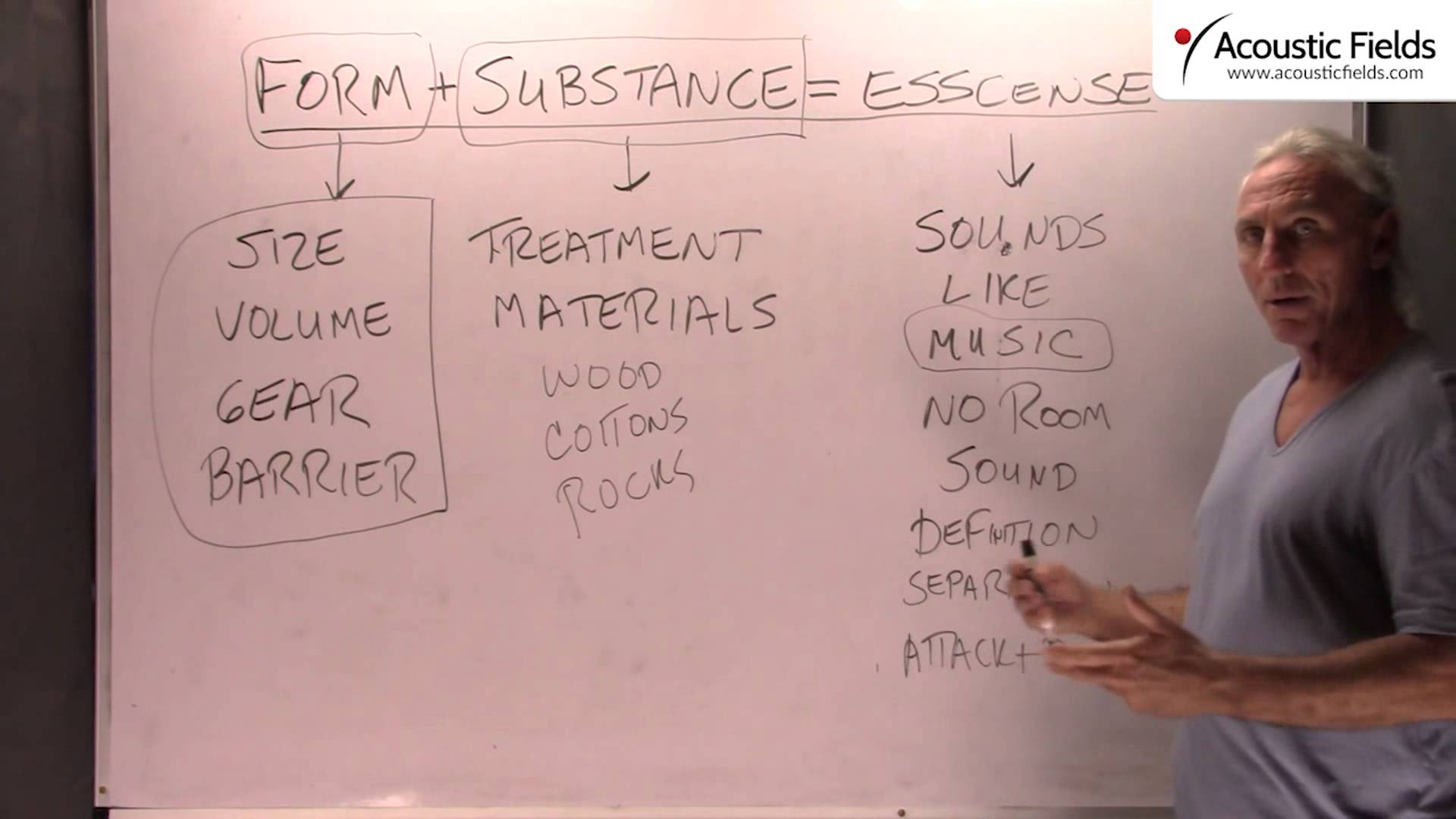Today I kind of want to give you a little bit of guidelines that we use in our design work and how we kind of approach projects. But we kind of follow this form plus substance equals essence formula which you may or may not have heard of but…
Form obviously is size, volume, the gear, the barrier technology. What are we trying to do with it in the room? What’s our objectives? What are we trying to achieve? Is it a home theater application? Is it a two channel listening? Is it control, is it mixing? Is it voice? Is it drum? Whatever the form the room takes, you have to be cognizant of that form.
You have to recognize that all the variables have to relate to the form. And everything has to work well together. Substance on the other hand is what are we doing inside of it? What kind of treatment are we using? What kind of materials?
We know from our discussion that wood, your cottons and even rocks or stones, your natural materials give you a better quality sound. So you want to use the treatment and the materials to form the substance that you’re trying to create within the room.
And the substance and the form together have to be married and blended together also. So form and substance equal essence. What are we trying to achieve in the room? Well, we’re trying to get the room to sound like music even though we’re in a room. The best sound in the world is listening to music in free space with no room sound, with no boundary surfaces.
Listen to live music outside. Listen to someone play outside. Just sit on a chair outside with an acoustic guitar and play. Okay? That’s the music, that’s what we want to hear. Now there’s all kinds of reasons for that, I’ll argue that as we evolved as human beings and our hearing process depended upon all these natural materials for recognition.
So if we use the natural materials, it probably contributes to the evolutionary ladder in which we developed our hearing processes. There’s a reason our ears are vertical and are on the sides of our heads also.
So the form and the substance creates the essence which is the music. That’s really what we’re trying to go. Obviously we want to minimize room sound and get that but within that context we have definition, separation, attack and decay; all the things that are present without a room.
So you want to make sure that you follow kind of a formula to achieve a result. So form plus substance equals the essence. That’s what we’re kind of doing.
A lot of people want the essence but they don’t have the form or the substance to achieve it. Or they’ll have the form, they’ll know what they want in terms of essence but the materials and the substance they’re using to create that will never work towards the goal. So form plus substance equals essence is the formula that we follow in most of our design work.
—
This is an unedited transcript from our video series from Acoustic Fields. There will be some errors in grammar and sentence structure that occur during this translation process.
For complete understanding and comprehension, please view the video which is included in this text. For any additional information regarding this topic or others relating to room acoustics, please contact us directly at:
P: 520 – 392 – 9486







